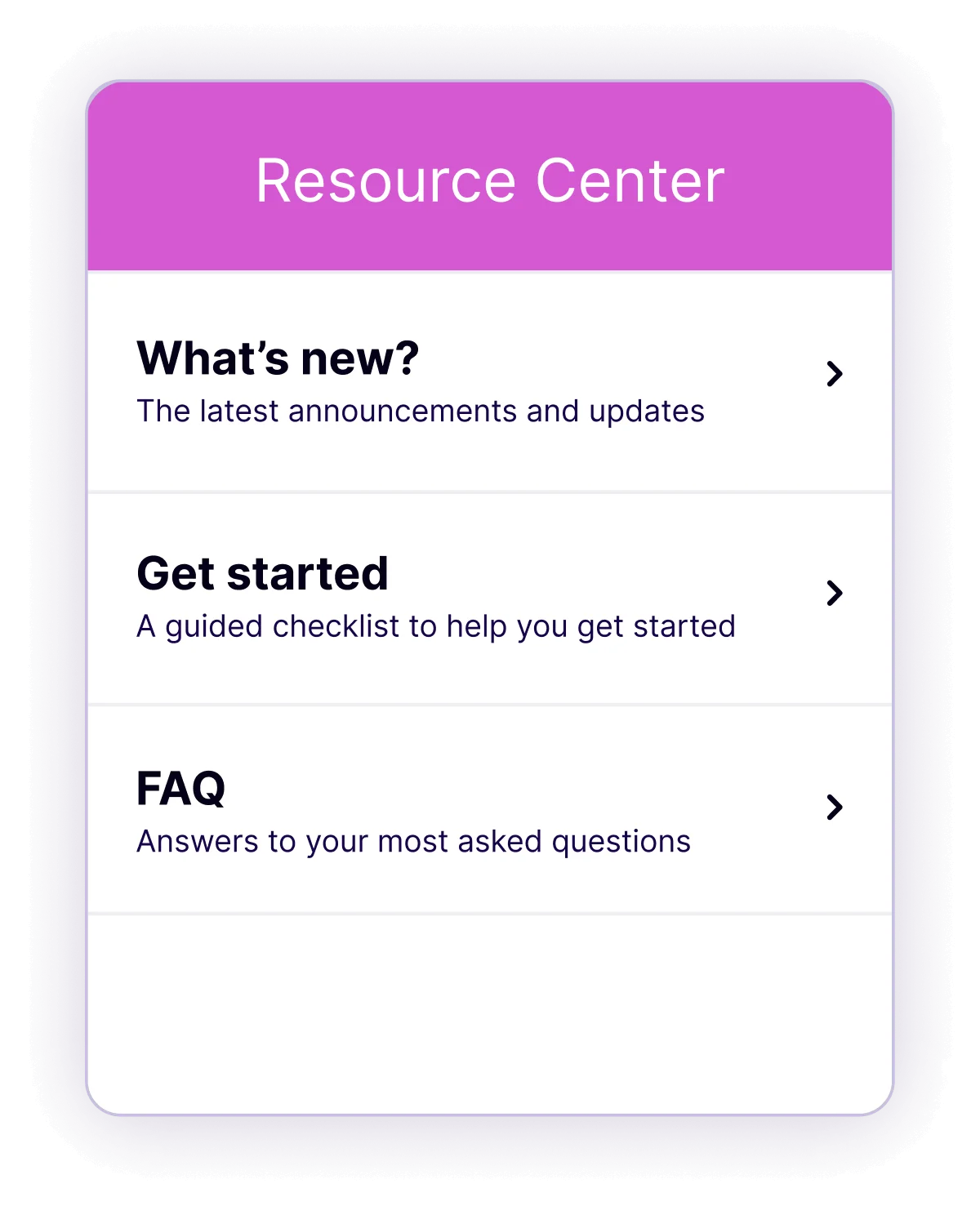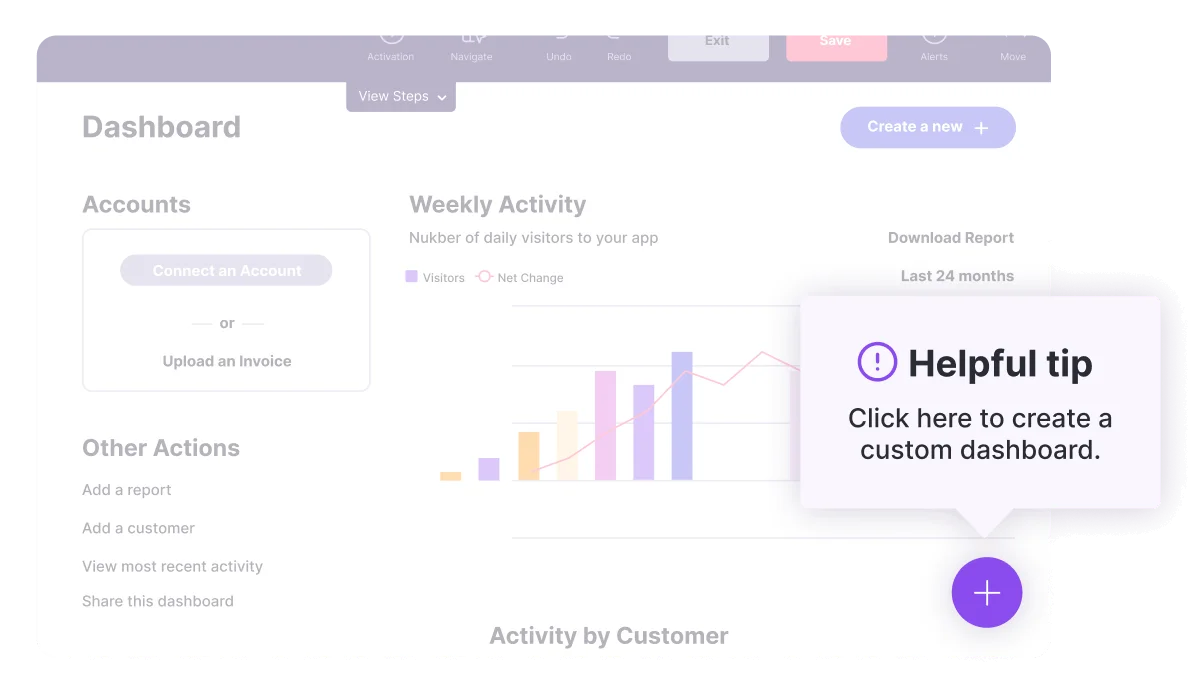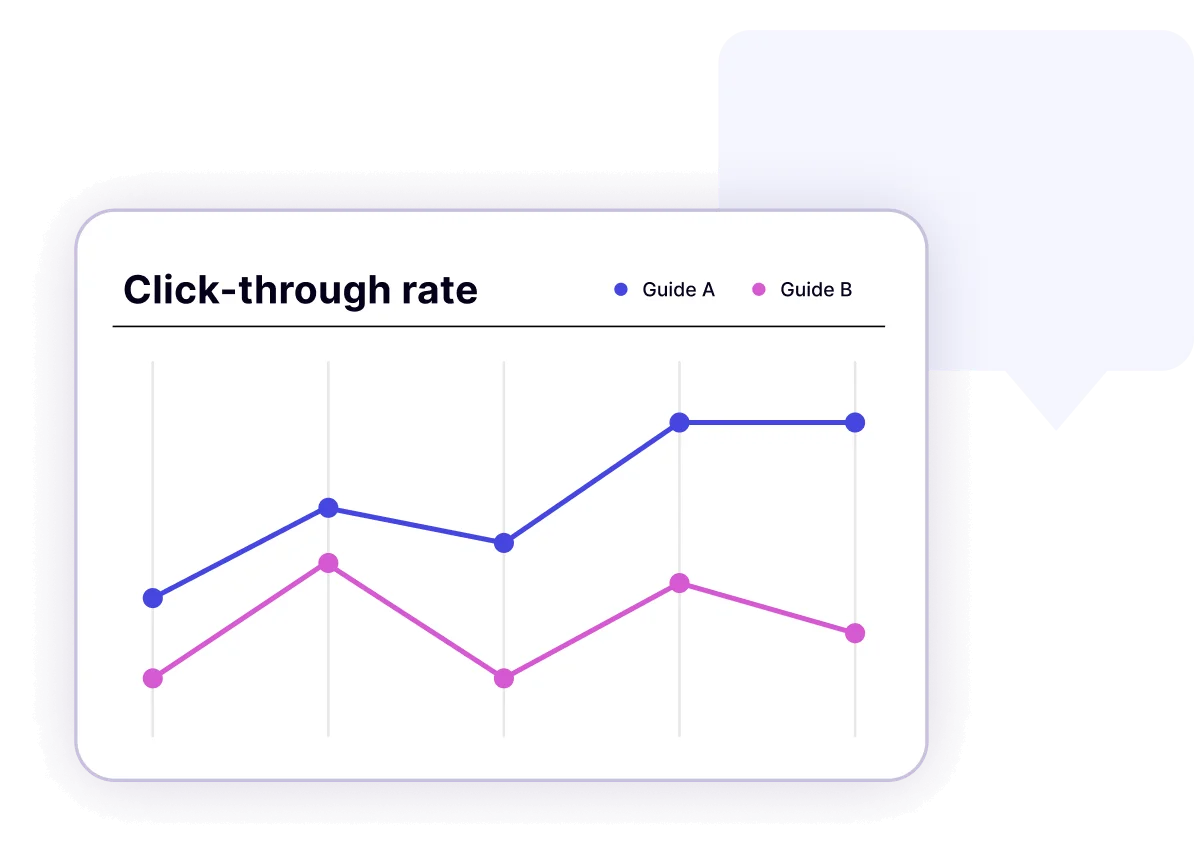
Table des matières
In a rush? Download the PDF for later
Download the E-BOOKIntroduction
Thinking about productivity in terms of process, not people
On a project level, company priorities are often temporary: Deploy a new application to employees, debut a new product to your customers, redesign your website, etc. But on a higher level, these projects serve more thematic, often permanent goals. Think increasing growth, growing the customer base, or becoming more efficient and productive. These are all important elements of what it means to be a successful business. But too often, the way we think about advancing them doesn’t reflect reality.
A mindset stuck in the past
Traditionally, it’s been common for managers to think about achieving overarching business goals in terms of individual or group performance. Is such-and-such regional sales team hitting their quota? Are they shrinking the average time it takes to close out the sales cycle with a customer? Are they executing work in the way it was intended to be done without raising any serious governance or regulatory compliance issues?
It’s not that asking these kinds of questions is wrong per se—far from it. But if a company does face some sort of performance or productivity issue, it’s tempting to immediately think of it as a people problem, when it most likely isn’t. Before jumping to people, managers should consider the process or processes tied to the issue. Are they clear, intuitive, and friction-free? Is effective onboarding in place? Is support readily available to assist when an employee gets stuck? In essence: Is the process in its current state (and/or the applications it’s built on) setting up employees for success, or for failure?
The backbone of business success
Optimizing workplace processes and the technology that powers them has never been more important. That’s why business operations and transformation teams are crucial to an organization’s success. They build the workplace processes that empower their people to get things done and the organization to succeed.
In this guide, we’ll give an overview of the steps business ops teams should take in order to create or optimize process solutions. First is to undertake the right scoping, analysis, and planning powered by a digital adoption solution. Once they do that, these teams have it in their power to design or refine ways of working that will put the employee at the center, to the benefit of the greater business.
01 Assessment and scoping
Define the problem
In designing a new process or planning a process or application change, teams should start with fundamental questions. First and foremost they should ask: What problem is this solution meant to solve for? For example, are budget projections coming from a company’s finance team consistently missing the mark? Are certain revenue teams regularly coming in under their target revenue goal? Is the company facing security issues or regulatory penalties because employees are mishandling data in some way? Whatever the case may be, it’s only when you have a clear understanding of the problem that you can begin formulating the right solution.
As business ops teams assess the change needed, it’s important to consider it in the context of how work happens today. Is the change (e.g. a new process or internal-facing application) high-impact? Is it connected to something fundamental about the business? If so, it’s worth thinking about setting up some sort of center of excellence (COE) architecture as a source of truth for navigating the change. A digital adoption solution such as Pendo, for example, can provide teams with an always-on Resource Center that employees can consult for best practices, FAQs, and tutorials.

With both the problem and the kind of change needed to fix it clear, ops teams can then move to considering various process or application modifications. If their plan involves a new application, for example, they should diligently test it to obtain proof of concept and ensure that it offers the necessary features and functionality. If the change involves technology or applications that the company already uses in some other context, ops teams should study their voice of employee program or feedback around it to understand any issues employees experience with that tech that could impact their change plans.
The business case for change
There’s another fundamental question business operations and transformation teams need to ask themselves when planning new ways of working: Does the proposed change make business sense? A new process for logging sales opportunities, say, may be well and good in the abstract, but if it requires the purchase of and migration of users to a costly new customer relationship management (CRM) platform, you want to make sure its ROI will outweigh what the company is paying for it.
In this instance, operations teams benefit from collaborating with their colleagues in business value departments to get the right answer. One key factor to keep an eye out for is whether the company is already paying for software that could meet the needs of change teams. Alternatively, if they decide buying new software is necessary, they can ascertain whether that software can also serve additional purposes that they currently use other apps for. Those apps could then be retired and the company could avoid accumulating duplicative applications and creating a SaaS sprawl problem.
02 Analysis and planning
Understand how work happens today to make it better tomorrow
Once they’ve completed their assessment of the problem and scoping of the change solution, business ops teams can move to a more in-depth analysis of why whatever instance of the current way of working isn’t, well, working.
Here again, leveraging a digital adoption solution can make all the difference. Pendo, for example, offers cross-app analytics that can deliver crucial insights about the entire user journey through the existing process or processes tied to the change initiative. What percentage of users are successfully adopting the current process? How long does it take them to complete it? If they’re dropping off, at what point are they doing so? Are there particular segments of users (in a given role, in a given location, exhibiting a certain behavior, etc.) who are struggling with execution?
Armed with these insights, business operations teams can comprehensively baseline the current state of work and use it to plan the new and improved future state—how work can happen better, and the tools and behaviors to help employees get there.
Defining success
Just as it was important for them to define the problem they needed to fix, business ops teams also need to define what successful outcomes would be post-change. This usually means aligning around certain KPIs. They may want X% of employees to be completing the new process after a given time period following the implementation. Or they may focus on the percentage successfully adopting a new component or application in the process. They may also set KPIs tied to greater business goals—a certain percentage increase in sales revenue influenced by the change, say. Or set secondary KPIs tied to employee satisfaction—a target Net Promoter Score (NPS) around the new application or change, for example. Whatever the metric(s), it’s impossible to say you’ve succeeded unless you’ve spelled out what success looks like in advance.
Know your audience
With a few exceptions, most change in the digital workplace doesn’t affect every employee in a business in exactly the same way. It’s usually confined to particular subgroups of employees who focus on whatever area that the new way of working affects. With that in mind, it’s important for business ops teams not only to plan the right change, but plan the right outreach and targeting strategy for that change.
In doing so, it’s best to avoid traditional training models where possible. One-off in-person or recorded Zoom sessions walking employees through a new process or tool present real problems. For one, they can be long and tedious, with the result that people start forgetting the material almost instantaneously once it’s over. What’s more, they can be hard to dig up or consult effectively in the moment when employees are immersed in the new process.
Rather than toggling between the workflow and a training recording or text manual, what if employees had access to support and training in the moment that accompanied them within the new application and/or across the new process? This is where the right digital adoption solution comes in again. Cross-app guidance allows teams to build customizable, targeted in-app notifications and walkthroughs that accompany users across the full set of apps a process comprises. Operations teams can segment support to employees by metadata (role, location, etc.) and behavior (whether it’s a person’s first time using an app, beginning a process, etc.). In doing so, they provide timely, contextual, and relevant guidance to the employees who need it—and leave those who don’t alone.

Cultivate a network of champions
Once they’ve validated the process and tech configuration in collaboration with IT, ops teams can prepare for implementation. But as they do, it’s important that they remember that driving change is a team sport. It’s too important and wieldy a task to be siloed within one team alone. The employees affected by change may not interact regularly or be familiar with the change planners themselves. They’ll want to feel supported and empowered by their regular network of colleagues. That’s why it’s important for ops teams to cultivate a “network of champions” for change. These champions will be in a better position to drive change among employees day to day than the ops teams themselves, because they work with the affected employees on a more regular basis and can support them personally in ways others cannot.

03 Adoption and reinforcement
Drive change dynamically
With their analysis of the current state of work and their planning of change and outreach based on it, ops teams are ready to deploy the change itself. Once they do, how will they know their tactics are effective? In traditional models of implementation, it takes time—usually at least a few weeks—to measure its effectiveness and compare post-change employee behavior to the baseline. Only then can the team analyze whether, and to what extent, the intervention moved the needle on whatever KPI they had in mind and plan next steps.
A better way—and one that a strong digital adoption solution empowers teams to take—is to drive change dynamically, through experimentation. With Pendo, for example, one can effectively “A/B” test one’s approach to implementation. At the start of implementation, a team can create two or more in-app guides and immediately get data on which of them is most effective at driving change. Teams can then seamlessly and instantly deploy the winner of the “test” to the user group as a whole. It’s a way to make driving change even more effective at the outset.

Empower employees to take part in the process
While guide experimentation and testing is an effective way to increase the efficacy of one’s change strategy, it’s not the only way. Business ops teams can and should also make employees themselves part of the process by actively soliciting feedback. Those who undertake a given process or use a given app on a daily basis will invariably have insights and ways of working that change planners didn’t account for. Having insights into that point of view can make all the difference in driving successful change.
With a digital adoption solution, operations teams can set up comprehensive feedback management systems to gauge and collect user sentiment and thoughts via in-app polls and surveys. In doing so, they’ll be getting insights from users at the time and place it matters most—within the app or process itself, as employees are using it. With that feedback in hand, they can then incorporate it into their change strategies and tactics.
Measure results, then adjust and deploy reinforcement tactics
With experiments completed and change in place, the time comes for business ops teams to see how well their new process/application/way of working is moving the needle on whichever KPIs they chose to define success through. If the KPIs aren’t moving in the right direction, they can go back to their analysis and explore reasons why. Maybe the guidance they’re providing isn’t user specific enough, or maybe employees are encountering hurdles their change model didn’t anticipate. Whatever the cause, a digital adoption solution provides the agility and flexibility to get answers and respond fast.
What’s more, even if KPIs are moving in the right direction, there’s no reason ops teams can’t examine their change tactics “in the wild” and find ways to make them even better. With the insights from analytics and feedback that a digital adoption solution provides, they can do just that.
Conclusion
The business value of empowering employees
The ultimate metric of successful change is the value a business gains from it. Just as it’s more helpful to think of productivity as a function of process, not people, operations teams can think of business success as a function of employee success. By designing the right change and helping individuals and groups of employees through it, ops and transformation teams strengthen the organization as a whole. In essence, design for employee success—and business success will follow.

